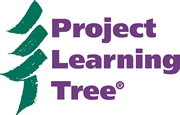The concept of probability, or chance, plays an important role in risk assessment. In this activity, students will conduct a series of experiments, such as tossing coins, to develop an understanding of probability. They will then apply their knowledge of probability to a scenario about the potential risk of using cellular phones.
This is one of 11 activities that can be found in PLT’s Exploring Environmental Issues: Focus on Risk. To get the activity, attend a training and receive PLT’s Focus on Risk secondary module. Below are some supporting resources for this activity.

